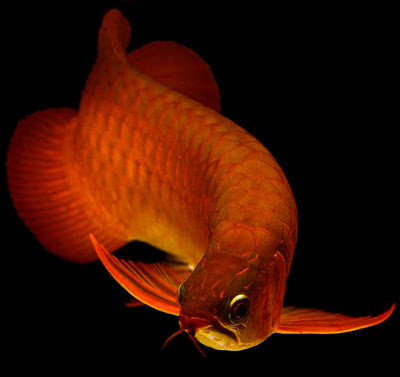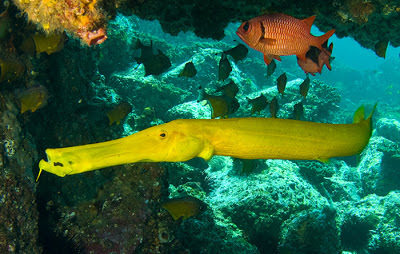The Oscar (Astronotus ocellatus) is
a species of fish from the cichlid family and it has become one of the most
popular “pet” fish because it will learn to recognize its owner/feeder and will
become extremely tame. Origin from Amazon, South America the fish can also be
found in other areas, including China ,
Peru , Ecuador , Australia ,
Colombia , Brazil , Guiana, French and the United States
 The species was originally described
by Louis Agassiz in 1831 as Lobotes ocellatus, as he mistakenly believed the
species was marine but later, it was proved that the species to the genus
Astronotus. The most popular pet fish Oscar known under a variety of common
names, including Tiger Oscar, Velvet Cichlid, Marble Cichlid, Red Oscar, Common
Oscar, Albino Oscar, Lutino Oscar and Wild Type Oscar. The fish is considered a
popular aquarium fish in the
The species was originally described
by Louis Agassiz in 1831 as Lobotes ocellatus, as he mistakenly believed the
species was marine but later, it was proved that the species to the genus
Astronotus. The most popular pet fish Oscar known under a variety of common
names, including Tiger Oscar, Velvet Cichlid, Marble Cichlid, Red Oscar, Common
Oscar, Albino Oscar, Lutino Oscar and Wild Type Oscar. The fish is considered a
popular aquarium fish in the
When the Oscar is about 1 to 2
inches long and wiggling its little nose in the tank at the local fish store,
it is so cute and appealing that lots of fish lover buy it. When the fish is
young, it can grow at the impressive rate of up to 1+ inch per month. The Oscar
(Astronotus ocellatus) has been reported to grow to about 45 cm in length and
1.6 kilograms (3.5 pounds) in weight.
The Oscar is typically darkly
colored with yellow-ringed spots on the caudal peduncle and on the dorsal fin.
These spots have been suggested to function to limit fin-nipping by piranha,
which co-occur with the fish in its natural environment. The beautiful pet
fish, Oscar is also able to rapidly alter its coloration, a trait which facilitates
ritualized territorial and combat behaviors amongst co specifics. When it is in
juvenile stage it has a different coloration from adults and is striped with
white and orange wavy bands and has beautiful spotted heads.
Quick stats of
Oscar
|
|
Family
|
Cichlidae
|
Scientific Name
|
Astronotus ocellatus
|
Subfamily
|
Astronotinae
|
Genus
|
Astronotus
|
Origin
|
Amazon,
|
Order
|
Perciformes
|
Class
|
Actinopterygii
|
Kingdom
|
Animalia
|
Phylum
|
Chordata
|
Max. Size
|
45 cm (18 inch)
|
Care Level
|
Difficult
|
pH level
|
6.6 to 7.0
|
Water
|
Keep them in
clean water
|
Water Conditions
|
72-77° F, KH 5-19
|
Color Form
|
Black,
|
Foods
|
Beetles,
crayfish, spiders, cricket's, worms and insects
|
























